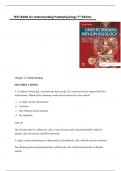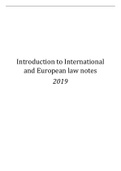Exam (elaborations)
TEST BANK FOR Understanding Pathophysiology 7th Edition by Sue E. Huether & Kathryn L. McCance , ISBN: 9780323639088 All Chapters Covered || Complete Guide A+
- Course
- Institution
- Book
Understanding Pathophysiology 7th edition by Huether, McCance Test Bank For Understanding Pathophysiology 7th Edition Test Bank Chapter 1. Cellular Biology MULTIPLE CHOICE 1. A student is observing a cell under the microscope. It is observed to have supercoiled DNAwith histones. Which of the follow...
[Show more]




